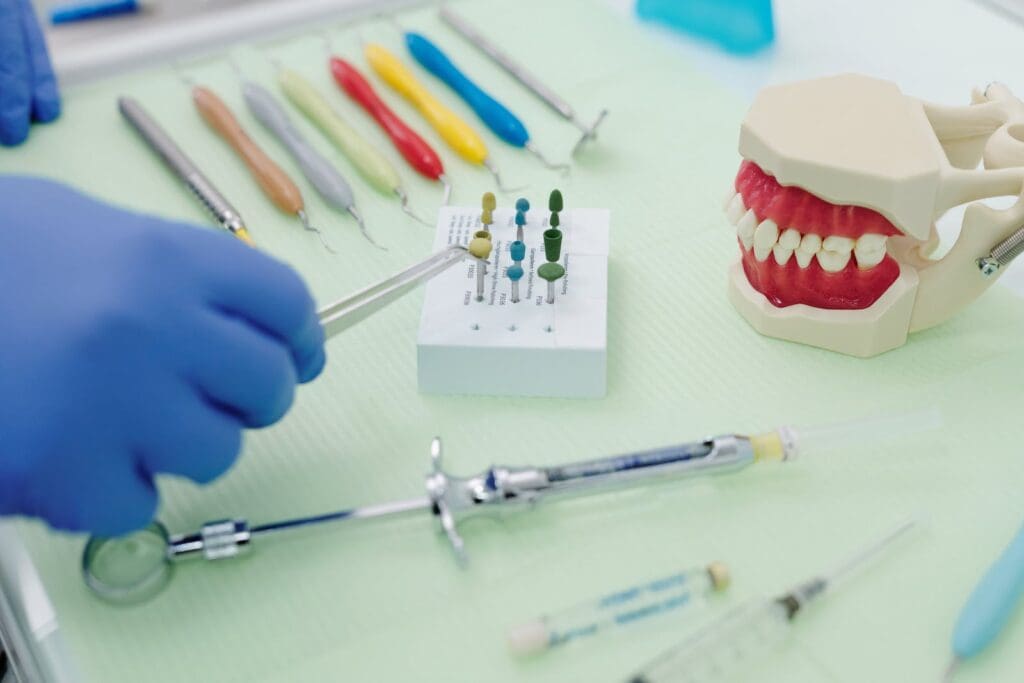
The Essential Guide to Gum Health and Periodontal Care
Gum health is a crucial, yet often overlooked, aspect of overall oral hygiene. Periodontics, the dental specialty focusing on the inflammatory disease that destroys the gums and other supporting structures around the teeth, plays a critical role in maintaining oral health. A lack of proper care can lead to periodontal disease, which ranges from simple gum inflammation to serious disease that can result in major damage to the soft tissue and bone that support the teeth.
Periodontists are dental specialists who are experts in the prevention, diagnosis, and treatment of periodontal disease and in the placement of dental implants. They receive extensive training in these areas, including three additional years of education beyond dental school. Periodontists are also well-versed in the latest techniques for diagnosing and treating periodontal disease and are trained in performing cosmetic periodontal procedures.
Understanding the signs of periodontal disease, the risk factors, and the treatment options can empower individuals to take control of their gum health. Regular dental check-ups, proper brushing and flossing techniques, and being aware of changes in oral health are all essential steps in preventing periodontal disease. When intervention is necessary, a periodontist can provide specialized care tailored to each individual’s needs, helping to ensure the longevity of their natural teeth and overall oral health.
Understanding Periodontal Health
The foundation of periodontal health is understanding what it encompasses and its significance, as well as recognizing the factors that compromise it, along with the symptoms that indicate potential issues and how these issues are identified.
Definition and Importance
Periodontal health refers specifically to the condition of the supporting structures around the teeth, which include the gums, periodontal ligaments, and the alveolar bone. Maintaining periodontal health is crucial because it protects individuals from periodontal diseases that can lead to tooth loss, and it has been linked to systemic conditions such as cardiovascular disease and diabetes.
Causes of Periodontal Diseases
Periodontal diseases, such as gingivitis and periodontitis, stem from a complex interaction of bacteria in dental plaque with the host’s immune response. Factors contributing to these diseases include:
- Poor Oral Hygiene: Inadequate removal of plaque can lead to tartar buildup and infection.
- Tobacco Use: Smoking or chewing tobacco significantly increases the risk of periodontal diseases.
- Genetic Predisposition: Some individuals are more susceptible due to their genetic makeup.
- Underlying Health Conditions: Conditions like diabetes can make the gum more vulnerable to infection.
| Risk Factor | Association with Periodontal Disease |
|---|---|
| Poor Oral Hygiene | Directly leads to plaque buildup |
| Tobacco Use | Increases severity and progression |
| Genetic Predisposition | Elevates likelihood of development |
| Underlying Health Conditions | Exacerbates disease conditions |
Symptoms and Diagnosis
Periodontal disease may present with a variety of symptoms; however, in its early stages, it can be asymptomatic. Recognizable signs include:
- Bleeding Gums: Often noticed during brushing or flossing.
- Receding Gums: Resulting in the appearance of longer teeth.
- Persistent Bad Breath: Caused by the bacteria in plaque.
Diagnosis typically involves:
- Periodontal Probing: Measuring pocket depth around a tooth.
- Dental X-rays: Assessing bone levels to check for the loss associated with periodontitis.
Healthcare providers use these symptoms and diagnostic tools to assess and monitor periodontal health, guiding appropriate treatment plans.
Role of Periodontists
Periodontists specialize in preventing, diagnosing, and treating gum disease. They are experts in the management of oral inflammation and in the placement of dental implants.
Training and Expertise
Periodontists undergo extensive training beyond dental school. They complete three additional years of education, focusing on the gums, bone, and underlying structures of the teeth. Their advanced training equips them with the skills to perform a range of treatments—ranging from scaling and root planing to more complex surgeries. They also receive specialized education in the use of state-of-the-art techniques and equipment.
Treatments Offered
The treatments offered by periodontists address various stages and forms of periodontal disease. These can include:
- Non-surgical Treatments: Such as scaling and root planing (deep cleaning), to remove tartar and bacteria from tooth surfaces and beneath the gums.
- Surgical Treatments: Including gum graft surgery, laser treatment, and regenerative procedures to restore supportive tissues.
- Dental Implants: They are trained to place, maintain, and repair dental implants.
- Cosmetic Procedures: Periodontists can also perform cosmetic procedures to enhance one’s smile appearance, which might involve adjusting the gum line or shaping the gums.
Their role is critical in maintaining oral health and, by extension, overall well-being.
Preventive Care and Maintenance
Effective periodontal health hinges on proactive preventive care and diligent maintenance. This section delineates essential habits and professional practices that sustain gum health and thwart periodontal disease.
Daily Oral Hygiene
Daily oral hygiene is the cornerstone of preventing gum disease. Individuals should brush their teeth at least twice a day using fluoride toothpaste to remove plaque, the sticky film of bacteria that forms on teeth. It’s imperative to use a soft-bristled toothbrush to avoid injuring the gums and to replace it every three or four months—or sooner if bristles are frayed. Flossing once daily is crucial to remove plaque and food particles from between the teeth and under the gumline where a toothbrush can’t reach.
Regular Dental Check-Ups
Scheduling regular dental check-ups is paramount for maintaining periodontal health. Dentists recommend that individuals have a dental examination at least twice a year, though some may require more frequent visits. These appointments allow professionals to detect early signs of gum disease and begin treatment promptly. Regular cleanings by a dental hygienist are also essential as they remove tartar (hardened plaque) that cannot be removed by brushing and flossing alone.
Surgical and Non-Surgical Treatments
Periodontal health can be addressed through various treatments depending on the severity of the gum disease. These treatments are aimed at controlling the infection and, if necessary, restoring the integrity of the periodontium.
Scaling and Root Planing
Scaling and root planing is a non-surgical procedure where dental plaque and tartar are meticulously removed from the root surfaces below the gum line. This process helps to smooth the roots to promote healing and to prevent further buildup of bacteria.
Gum Graft Surgery
In cases where gums have receded significantly, gum graft surgery may be necessary to cover exposed roots. This surgical procedure involves taking tissue from the palate or another donor source and attaching it to the affected area to reduce further recession and bone loss.
Laser Treatment
Laser treatment involves the use of laser technology to remove the inflamed gum tissue surrounding the tooth. When compared to traditional surgery, it can minimize bleeding, swelling, and discomfort for the patient, leading to a quicker recovery.
Advances in Periodontics
Periodontics has seen significant developments, particularly in the ways periodontists diagnose and treat gum disease. These advances aim to enhance patient outcomes and make treatments more efficient and less invasive.
Innovative Technologies and Techniques
In the realm of periodontics, laser therapy has become a pivotal technology for the non-surgical treatment of gum disease. Lasers provide precision in targeting diseased tissue while preserving healthy areas, resulting in faster healing times and reduced discomfort for patients. Cone-beam computed tomography (CBCT) is another advancement that allows periodontists to obtain 3D images of the jaw and teeth, aiding in the meticulous planning of dental implants and the management of periodontal disease.
Minimally invasive techniques such as the Pinhole Surgical Technique (PST) have revolutionized traditional gum grafting procedures. PST allows for the correction of gum recession without the need for sutures or incisions, offering a less painful option with a quicker recovery period. Additionally, growth factors and tissue engineering have made significant strides, with the use of proteins and biocompatible materials to stimulate the body’s natural ability to regenerate bone and soft tissue.
The Future of Gum Health Management
The future of periodontics is geared towards more personalized medicine. Genetic testing is expected to play a role in predicting an individual’s risk of developing periodontal disease and tailoring preventative strategies accordingly. With ongoing research, there is a potential to see biomarker discovery, which could lead to early detection and intervention for periodontal conditions.
Advancements in immunotherapy are also on the horizon, which may provide new ways to modify the immune response in periodontal disease, reducing tissue destruction and promoting regeneration. These upcoming technologies and methodologies epitomize a new era in periodontics, focusing on precision, patient comfort, and optimal long-term outcomes for gum health.



